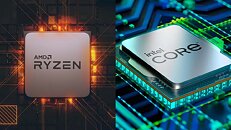Russia to Use Chinese Zhaoxin x86 Processors Amidst Restrictions to Replace Intel and AMD Designs
Many companies, including Intel and AMD, have stopped product shipments to Russia amidst the war in Ukraine in the past few months. This has left the Russian state without any new processors from the two prominent x86 designers, thus slowing down the country's technological progress. To overcome this issue, it seems like the solution is embedded in the Chinese Zhaoxin x86 CPUs. According to the latest report from Habr, a motherboard designer called Dannie is embedding Chinese Zhaoxin x86 CPUs into motherboards to provide the motherland with an x86-capable processor. More precisely, the company had designed a BX-Z60A micro-ATX motherboard that embeds Zhaoxin's KaiXian KX-6640MA SoC with eight cores based on LuJiaZui microarchitecture. The SoC is clocked at a frequency range of 2.1-2.7 GHz, carries 4 MB of L2 cache, 16 lanes of PCIe 3.0, and has integrated graphics, all in a 25 Watt TDP.
As far as the motherboard is concerned, it supports two DDR4 memory slots, two PCIe x16 connectors, M.2-2280 and M.2-2230 slots, and three SATA III connectors for storage. For I/O you have USB ports, DisplayPort, HDMI, VGA/D-Sub, GbE, 3.5-mm audio, and additional PS/2 ports. This is a pretty decent selection; however, we don't know the pricing structure. A motherboard with KaiXian KX-6640MA SoC like this is certainly not cheap, so we are left to wonder if this will help Russian users deal with the newly imposed restriction on importing US tech.
As far as the motherboard is concerned, it supports two DDR4 memory slots, two PCIe x16 connectors, M.2-2280 and M.2-2230 slots, and three SATA III connectors for storage. For I/O you have USB ports, DisplayPort, HDMI, VGA/D-Sub, GbE, 3.5-mm audio, and additional PS/2 ports. This is a pretty decent selection; however, we don't know the pricing structure. A motherboard with KaiXian KX-6640MA SoC like this is certainly not cheap, so we are left to wonder if this will help Russian users deal with the newly imposed restriction on importing US tech.



















































